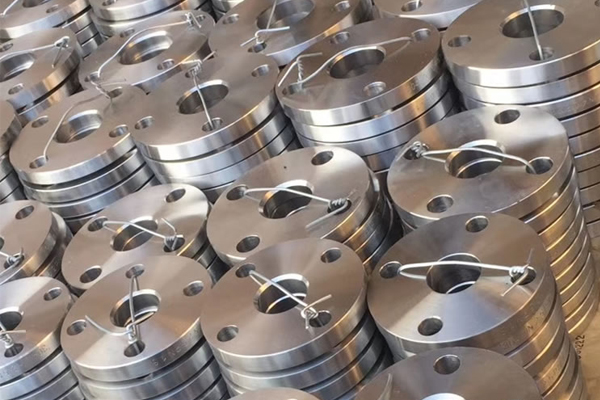1. Yield strength of flange
Is the yield limit of metal material when yield phenomenon occurs, that is, the stress resisting microplastic deformation. For metal materials with no obvious yield phenomenon, the yield limit is defined as the stress value of 0.2% residual deformation, which is called the conditional yield limit or yield strength.
The external force greater than the yield strength will make the parts permanently invalid and irreparable. If the yield limit of low carbon steel is 207MPa, when greater than this limit under the action of external forces, parts will produce permanent deformation, less than this, parts will restore the original appearance.
(1) For materials with obvious yield phenomenon, yield strength is the stress at the yield point (yield value);
(2) For materials with no obvious yield phenomenon, the stress when the limit deviation of the linear relationship between stress and strain reaches a specified value (usually 0.2% of the original scale distance). It is usually used to evaluate the mechanical and mechanical properties of solid materials, and is the actual limit of material use. Because in the stress exceeds the yield limit of the material after the necking, the strain increases, so that the material damage, can not be used normally. When the stress exceeds the elastic limit and enters the yield stage, the deformation increases rapidly, which produces not only elastic deformation but also partial plastic deformation. When the stress reaches point B, the plastic strain increases sharply and the stress-strain fluctuates slightly, which is called yield. The maximum stress and minimum stress at this stage are called the upper yield point and the lower yield point respectively. Since the value of the lower yield point is relatively stable, it is called the yield point or yield strength (ReL or Rp0.2) as the index of material resistance.
Some steel (such as high carbon steel) without obvious yield phenomenon, usually with the occurrence of trace plastic deformation (0.2%) of the stress as the yield strength of the steel, known as the conditional yield strength.
2. Determination of flange yield strength
The specified non-proportional elongation strength or specified residual elongation stress should be measured for metal materials without obvious yield phenomenon, while the yield strength, upper yield strength and lower yield strength can be measured for metal materials with obvious yield phenomenon. Generally, only the yield strength is measured.
3. flange yield strength standard
(1) The highest stress in the proportional limit stress-strain curve, which conforms to the linear relationship, is usually represented by σ P in the world. When the stress exceeds σ P, the material is considered to yield. There are three commonly used yield standards in construction projects:
(2) Elastic limit The maximum stress that the material can fully recover after unloading after loading, taking no residual permanent deformation as the standard. Internationally, it is usually expressed as ReL. The material is considered to yield when the stress exceeds ReL.
(3) Yield strength is based on certain residual deformation. For example, 0.2% residual deformation stress is usually used as yield strength, and the symbol is Rp0.2.
4. Factors affecting yield strength of flange
(1) Internal factors are: combination, organization, structure, atomic nature.
(2) External factors include temperature, strain rate and stress state.
φ is a general unit, refers to the diameter of pipes and elbow, steel and other materials, can also be said to be the diameter, such as φ 609.6mm refers to the diameter of 609.6mm.
Post time: Dec-06-2021

